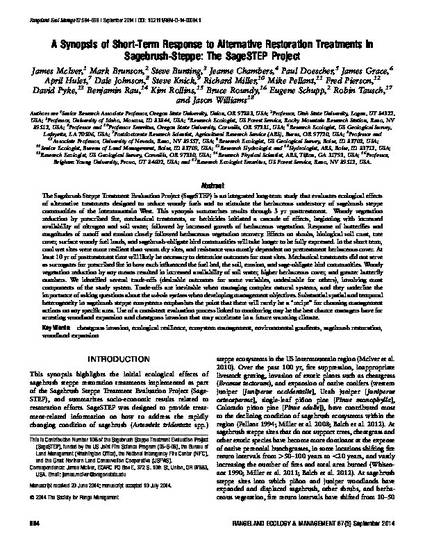
Article
Synopsis of Short-Term Response to Alternative Restoration Treatments in Sagebrush-Steppe: The SageSTEP Project
Rangeland Ecology & Management
(2014)
Abstract
The Sagebrush Steppe Treatment Evaluation Project (SageSTEP) is an integrated long-term study that evaluates ecological effects of alternative treatments designed to reduce woody fuels and to stimulate the herbaceous understory of sagebrush steppe communities of the Intermountain West. This synopsis summarizes results through 3 yr posttreatment. Woody vegetation reduction by prescribed fire, mechanical treatments, or herbicides initiated a cascade of effects, beginning with increased availability of nitrogen and soil water, followed by increased growth of herbaceous vegetation. Response of butterflies and magnitudes of runoff and erosion closely followed herbaceous vegetation recovery. Effects on shrubs, biological soil crust, tree cover, surface woody fuel loads, and sagebrush-obligate bird communities will take longer to be fully expressed. In the short term, cool wet sites were more resilient than warm dry sites, and resistance was mostly dependent on pretreatment herbaceous cover...
Disciplines
Publication Date
2014
DOI
https://doi.org/10.2111/REM-D-14-00084.1
Citation Information
Eugene W. Schupp. "Synopsis of Short-Term Response to Alternative Restoration Treatments in Sagebrush-Steppe: The SageSTEP Project" Rangeland Ecology & Management Vol. 67 Iss. 5 (2014) p. 584 - 598 Available at: http://works.bepress.com/eugene_schupp/130/
